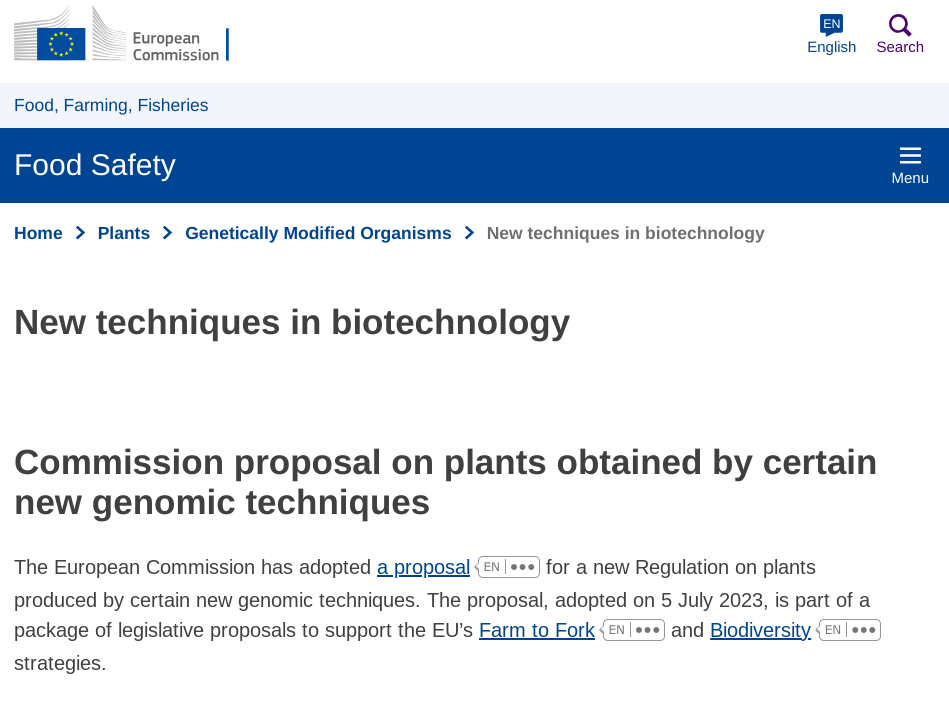When UK Ministers first unveiled plans to diverge from restrictive EU rules classifying gene edited products as GMOs, it was hailed as a major Brexit dividend, giving Britain the freedom to pursue a more enabling, pro-innovation trajectory compared to our counterparts on the continent. Fast forward through Covid, war in Ukraine and successive droughts in southern Europe, and the EU has moved quicker than many expected to overhaul its GMO rules. As the UK Government prepares the detailed implementing rules for the Precision Breeding Act in England, Ministers must ensure we retain a leading edge over the rest of Europe in promoting investment, research and innovation in these technologies, urges Samantha Brooke, chief executive of the British Society of Plant Breeders (BSPB).
[Recently], the EU Commission unveiled its much-anticipated proposals for regulating plants produced using New Genomic Techniques (NGTs), such as gene editing, in the European Union.
The proposals create two distinct pathways for NGT plants to be placed on the market. NGT plants that could occur naturally or through conventional breeding (similar to the definition of a Precision Bred Organism under the Genetic Technology (Precision Breeding) Act 2023 in England), would essentially be regulated in the same way as conventional plants and seeds, with no separate statutory requirement for risk assessment, food and feed marketing authorisation, traceability, food labelling or coexistence arrangements. Other NGT plants would be subject to the EU’s existing GMO regulations.
The EU approach is based on a scientific opinion adopted by the European Food Safety Authority (EFSA) in November 2020 which confirmed that “genome editing techniques that modify the DNA of plants do not pose more hazards than conventional breeding.”
Turning to the situation at home, it is worth noting that simplified field trial arrangements introduced in March last year have already led to an increase in research activity, with eight new field trials of precision bred crops notified in England under the new arrangements. That’s twice as many as the entire EU-27 over the same period. As NIAB chief executive Professor Mario Caccamo recently observed, the field trial notifications involved cover a range of crops and traits, all focused on using new precision breeding techniques to make our farming and food production systems healthier, safer, and more sustainable.
This increase in field trial activity demonstrates that more proportionate and enabling regulation of precision breeding techniques can open up the potential for plant scientists, breeders and farmers to keep pace with demands for increased agricultural productivity and resource-use efficiency, healthier food, reduced chemical use, and resilience to climate change.
But that early-stage research needs a clear route to market to realise those benefits in practice.
Through simplified trials arrangements, and the subsequent enactment of the Precision Breeding Act, the UK Government has led the way in diverging from outdated EU rules which classified gene edited products in the same way as GMOs.
Here in England, the Food Standards Agency (FSA) still appears on course to establish an entirely separate regulatory process for precision bred food and feed products, potentially involving expert committee scrutiny, risk assessment, public consultation, Parliamentary approval and Secretary of State sign-off. That could significantly drive up the red tape, time and costs involved in bringing new precision bred crops to market.
Of course, the EU proposals have a long way to go, with some Member States and MEPs already voicing their opposition. Nor are the Commission’s plans as proportionate and evidence-based as many EU scientists and plant breeders would like, with breeders’ organisation Euroseeds challenging as discriminatory the proposed requirements to label seed bags, to exclude NGTs from organic farming, and to place an arbitrary limit on the number of genetic changes permitted.
But the direction of travel is clear, and it should be ringing alarm bells with UK ministers who want to see Britain’s scientists, breeders and farmers in the vanguard of these technologies.
Outside the EU, BSPB members are operating in a much smaller market-place than our European counterparts. We have a world-leading plant science base, and a highly efficient plant breeding and seeds sector, but for investment and innovation to take place here, our regulations need to be even more agile, responsive and enabling than in the EU, and certainly not more restrictive. BSPB and its members are therefore urging UK Ministers, and the Food Standards Agency in particular, to ensure implementing arrangements for the Precision Breeding Act are as streamlined as possible, and reflect the overwhelming scientific evidence that precision bred products are at least as safe as their conventionally bred counterparts.
Echoing Professor Caccamo, it would be a travesty if the EU, from whose restrictive rules we originally sought to diverge, turned out to have more enabling and science-based rules than our own.
Samantha Brooke is chief executive of the British Society of Plant Breeders (BSPB). Find Samantha on Twitter @SamBrooke100
A version of this article was originally posted at Science for Sustainable Agriculture and is reposted here with permission. Any reposting should credit the GLP and original article. Find Science for Sustainable Agriculture on Twitter @SciSustAg
































